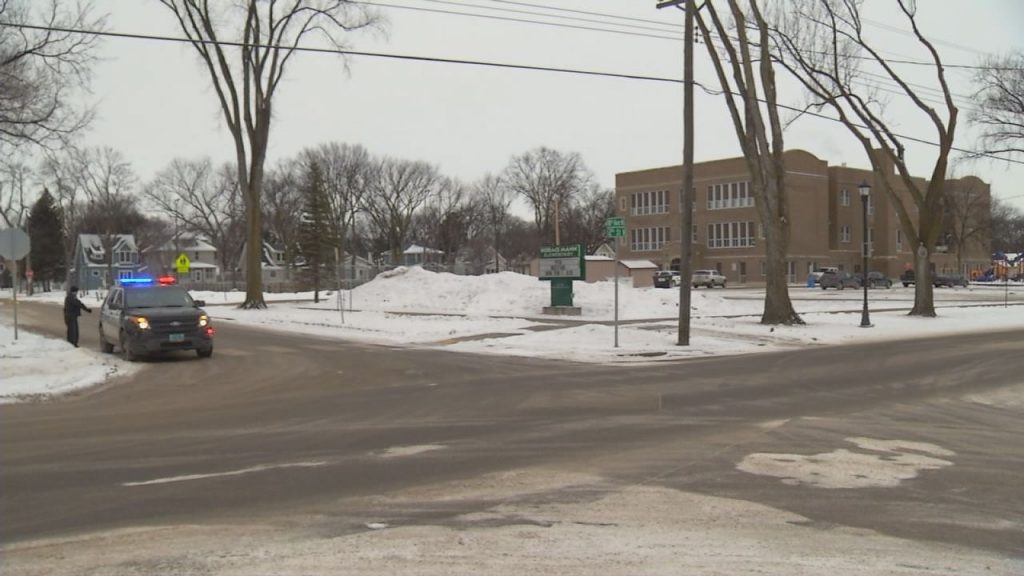Trump policies leave North Dakota summer tourism prospects uncertain

WALHALLA, N.D. (North Dakota News Cooperative) — Communities and businesses near sites administered by the National Park Service and those reliant on Canadian tourists are facing uncertainty after recent policy decisions by the Trump administration.
After the firing of 1,000 National Park Service workers on Feb. 14 along with tariffs against Canada and barbs issued by President Donald Trump and others in his administration referring to our neighbor to the north as the “51st state,” informal boycotts ensued and the economic impact is already being reported.
On Feb. 3, the U.S. Travel Association estimated a 10% reduction in Canadian tourist visits would result in $2.1 billion in lost travel spending and 14,000 job losses nationwide following the Trump administration’s first salvo on tariffs.
While initially paused for a month, President Trump signaled on Feb 25 that the tariffs would go ahead as planned on March 4.
Informal Canadian travel boycotts
Some businesses in North Dakota have already begun to feel the impact of fewer Canadian tourists.
Frost Fire Park, a ski resort near Walhalla in the northeast part of the state, recently saw a drop in visitors.
“At least 25% or more,” the park’s general manager Patty Gorder said of the decline in the past month.
“I’ve even had emails where (Canadians) have taken the time to let me know how they feel about the whole situation and how they’re not wanting to support not only our business, but our state, because of what the state of North Dakota is standing behind,” Gorder said.
This includes people saying they’ll no longer use season passes they already hold, she said.
Since winter is almost over, the impacts may not be as great as they would have been if the Trump administration’s actions happened before the ski season.
Because the park is so close to the border and to Winkler, Manitoba, Gorder said around 75% of the clientele at Frost Fire is from Canada.
“It’s really unfortunate,” Gorder said.
The administration’s actions already impacted the Tourism and Marketing division of the state’s Department of Commerce as well, according to state tourism director Sara Otte Coleman.
This includes delaying a paid marketing campaign in Canada until there’s a better understanding of Canadian sentiment about traveling to North Dakota, she said.
“We have no way to project if our Canadian visitation numbers will decrease,” Otte Coleman said.
While Canadian border crossings increased around 10% in 2024 from the previous year, Otte Coleman said the state still lags behind pre-pandemic numbers.
Visits by Canadians are currently around 78% of what they were in 2019.
“We do not have detailed data on the number of Canadians visiting sites and events across the state, but know from tourism operators that Canadians are an important part of their visitation numbers,” Coleman said.
The International Peace Garden, which straddles the border near Bottineau and is operated jointly by a nonprofit board of American and Canadian members, has not yet had a considerable impact because the park is in its low season, said CEO Tim Chapman.
“We have received some feedback a few weeks ago from primarily Canadians, just kind of expressing dismay with some of the political rhetoric,” Chapman said.
Chapman said visitor numbers and revenue rebounded last year to meet or exceed 2019 numbers.
“One thing I’ve encouraged visitors who have been a little frustrated is to continue to visit, because I think most Americans and Canadians, regardless of what’s going on in politics, still really appreciate that cooperation and friendship that our countries have always had,” Chapman said.
Congresswoman Julie Fedorchak, R-N.D., said she recognizes the strong ties between North Dakota and Canada and would like to see policies encouraging, not discouraging, cross-border travel and business.
Fedorchak said she believed the proposed tariffs had been effective in pushing Canada to address fentanyl trafficking and illegal immigration.
Canada is the top destination for North Dakota exports, with the state sending $5.9 billion in goods to Canada in 2023, according to the Office of the U.S. Trade Representative. That represents 79% of North Dakota’s foreign exports.
North Dakota also imports more from Canada than from any other country, with around $3 billion in goods annually coming south.

A bison grazes in the South Unit of Theodore Roosevelt National Park on July 5, 2024. (Amy Dalrymple/North Dakota Monitor)
Theodore Roosevelt National Park staffing
Another area of concern relates to the firing of permanent staff at sites administered by the National Park Service and how this could impact services in the park and tourism in surrounding communities.
In North Dakota, this includes the state’s most visited tourist site of Theodore Roosevelt National Park, as well as Fort Union Trading Post straddling the border with Montana, Knife River Indian Villages near Stanton, and upkeep of both the North County and Lewis & Clark national trails.
Representatives of Theodore Roosevelt National Park and the National Park Service Midwest regional office out of Omaha, Nebraska, declined to comment on personnel matters when contacted by NDNC.
Bill Wade, executive director of the Association of National Park Rangers, which is tracking the firings and impacts, said he’s confirmed at least three permanent staff at Theodore Roosevelt National Park were fired on Feb. 14.
What kind of positions were axed at the park are not known, he said. Wade is also uncertain about any firings at Fort Union or Knife River.
“What we know from the numbers that we have nationwide, it seems that the functions in parks that were hit the hardest were those staff that do the interpretation and education, the visitor centers, staff that give the programs, do school groups, things like that,” Wade said.
Others let go include workers at park entrance stations and custodial staff, Wade said. Loss of those workers could lead to longer waits to enter parks and facilities that aren’t as well kept.
Staff at Fort Union declined to comment on any staff changes.
Wade indicated additional plans for staff reductions at the National Park Service are forthcoming and could occur in late March or early April.
“That suggests potentially many more layoffs,” Wade said.
In a statement in response to questions, Sen. John Hoeven, R-N.D., said that the National Park Service is still determining full-time staffing levels and there’s been no change for Theodore Roosevelt National Park’s seasonal hiring plans. He said the park expects it will be able to maintain its in-park experience for visitors.
Fedorchak said her team is currently looking into the situation with Theodore Roosevelt National Park and will continue engaging with stakeholders.
“I appreciate the concern folks in tourism and others have on the current federal funding uncertainty,” Fedorchak said. “I believe these disruptions will be short term and the summer tourism season won’t be impacted.”
Otte Coleman said the state Commerce department will have a delegation in Washington, D.C., in early April and hopes to get more clarity from the Department of Interior, now headed by former Gov. Doug Burgum, and the National Park Service.
Doug Ellison, former Medora mayor and owner of Amble Inn and Western Edge Books in Medora, said there’s been “some discussion and concern” about the impact of the staffing cuts on public services at Theodore Roosevelt National Park in the community.
“We’ll see how the dust settles,” he said.
On the Canadian tourism side, Ellison didn’t think there’d be a huge impact on Medora but did say around 20% of bookstore customers are Canadian.
Border restrictions during the pandemic reduced numbers coming down from Canada, so those impacts were already “very noticeable” in recent years, he said.
(Story written by Michael Standaert – North Dakota News Cooperative)






